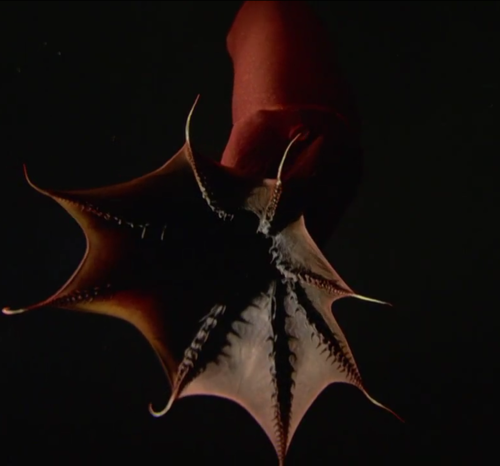Vampire Squids have large fins at the top of its body that resemble ears. These fins serve as its primary means of propulsion as it flies through the water by flapping them.The Vampire Squid can also use jet propulsion and is gelatinous, relating more to jellyfish than squids.

The vampire squid's eight arms are connected with a webbing of skin, which makes it look more like an octopus than a squid. When threatened, the squid can draw its arms up over itself and form a defensive web that covers its body. Each of the eight arms is lined with a single row of suction cups and rows of soft, fleshy spines known as cirri. It is these spines, along with the cape-like webbing and red eyes that give the vampire squid its unusual name.

Vampire squid are found throughout the deep oceans of the world in most tropical and temperate regions at depths of between 300 feet and 3,000 feet. They live in the oxygen minimum layer of the ocean where virtually no light reaches. Vampire Squids tend to prefer a temperature between 35 and 43 degrees Fahrenheit.
The vampire squid's body is covered with light-producing organs called photophores. This gives the squid the unique ability to "turn itself on or off" at will through a chemical process known as bioluminescence. Thankfully, the Vampire Squid is not endangered nor is it a threat to human life.

No comments:
Post a Comment